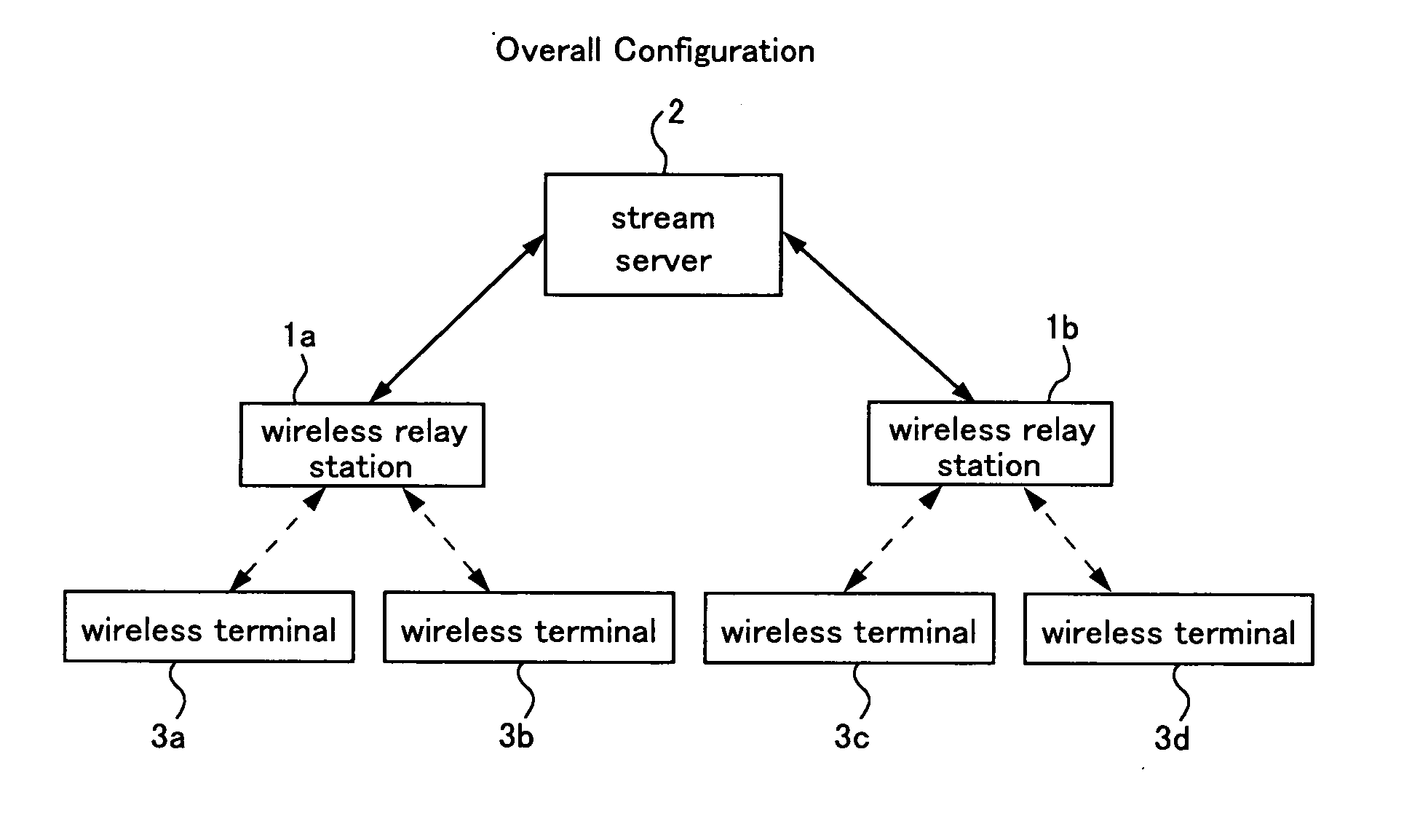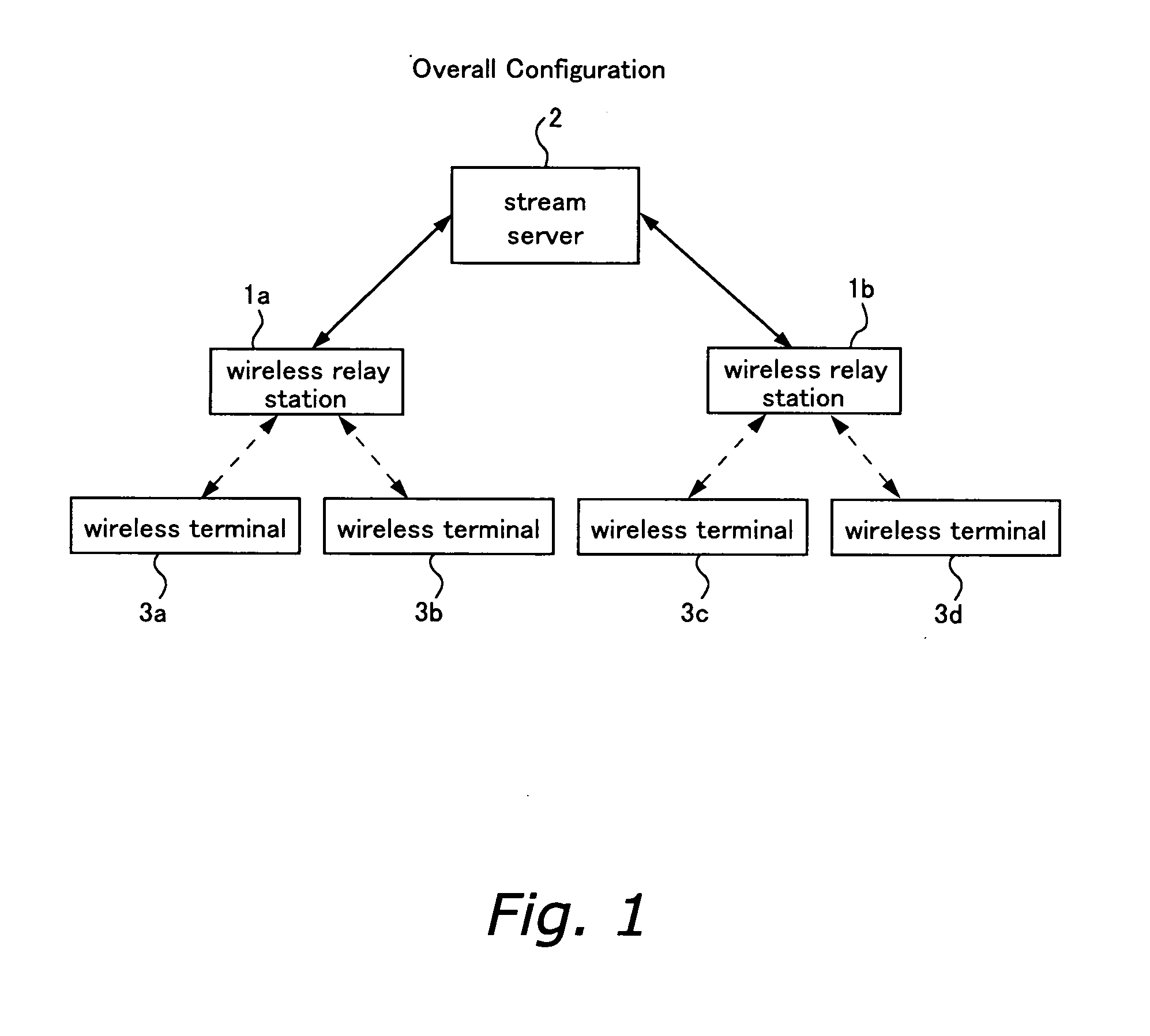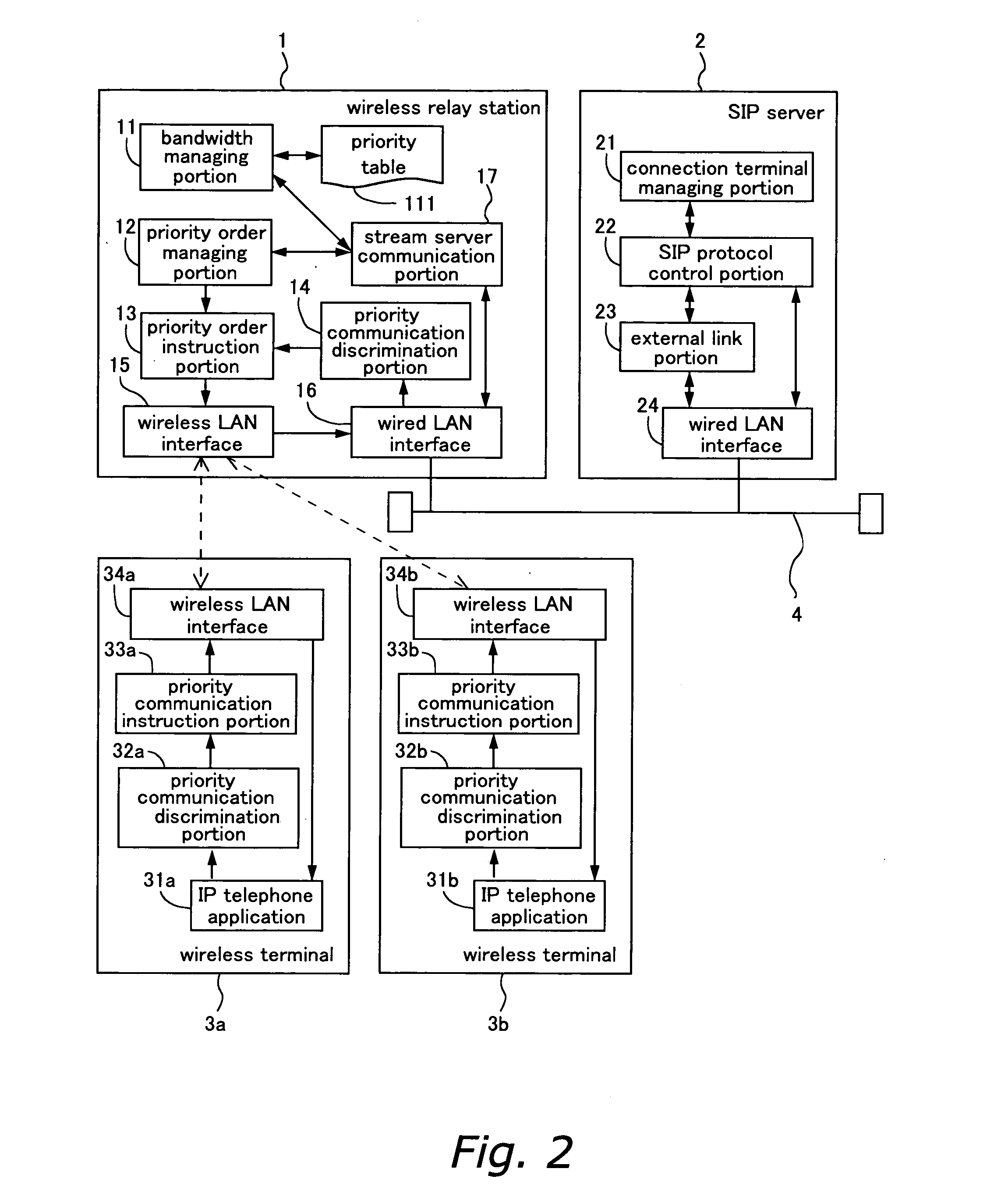Communication relay method and device
a communication relay and relay technology, applied in the field of communication schemes, can solve the problems of slowing down of communication speed or delay in response, affecting the quality of communication, so as to prevent deterioration of priority communication quality and change flexibly
- Summary
- Abstract
- Description
- Claims
- Application Information
AI Technical Summary
Benefits of technology
Problems solved by technology
Method used
Image
Examples
first embodiment
(1) Configuration
FIG. 1 shows the overall configuration of a wireless communication system according to a first embodiment. The wireless communication system includes at least one wireless relay station 1a, 1b, a stream server 2, and a plurality of wireless terminals 3a to 3d. The functional configurations of the wireless relay stations and the wireless terminals are the same, and unless it is necessary to differentiate between them, they are referred to without the letters a, b, etc.
The wireless terminals 3 can be connected via a wireless LAN to any of the wireless relay stations 1. The wireless stations 1 are connected to one another by a wired LAN 4 (see FIG. 2). Furthermore, the wireless relay stations 1 are connected via a wired LAN 4 to a stream server 2.
The stream server 2 handles all or a portion of the wireless communication of the wireless terminals 3, and uses communication identifiers to discriminate the various communications to be handled. An example of the strea...
second embodiment
In the first embodiment, an upper limit is provided for the number of prioritized communications registered in the priority table 111, thus restricting the registrations in the priority table 111. Another method is to judge whether resources for prioritized communication are available based on the bandwidth that the wireless terminals 3 consume by wireless communication (referred to as “consumption bandwidth” in the following).
FIG. 5 shows the functional configuration of a wireless relay station 1, a SIP server 2 and wireless terminals 3 according to a second embodiment. Elements having the same function as in the first embodiment are denoted by the same reference numerals. Differences to the first embodiment are the fact that a signal administration table 112 is provided, as well as the information stored in the priority table 113.
FIG. 6 is a schematic illustration of the signal administration table 112. Registered in the signal administration table 112 are communication identif...
third embodiment
In the first and the second embodiment, it is possible to combine the priority table 111 or the priority table 113 and the signal administration table 112 to one table.
FIG. 8 shows an administration table in which the priority table 113 and the signal administration table 112 of the second embodiment have been combined. It is possible to perform the same processing as described above, when using the administration table shown in FIG. 8 instead of the priority table 111 shown in FIG. 1, or instead of the combination of the priority table 113 and the signal administration table 112 shown in FIG. 6. The communication bandwidth necessary for the signaling communication can be calculated based on the number of wireless terminals or the connection process frequency.
PUM
 Login to View More
Login to View More Abstract
Description
Claims
Application Information
 Login to View More
Login to View More - R&D
- Intellectual Property
- Life Sciences
- Materials
- Tech Scout
- Unparalleled Data Quality
- Higher Quality Content
- 60% Fewer Hallucinations
Browse by: Latest US Patents, China's latest patents, Technical Efficacy Thesaurus, Application Domain, Technology Topic, Popular Technical Reports.
© 2025 PatSnap. All rights reserved.Legal|Privacy policy|Modern Slavery Act Transparency Statement|Sitemap|About US| Contact US: help@patsnap.com



